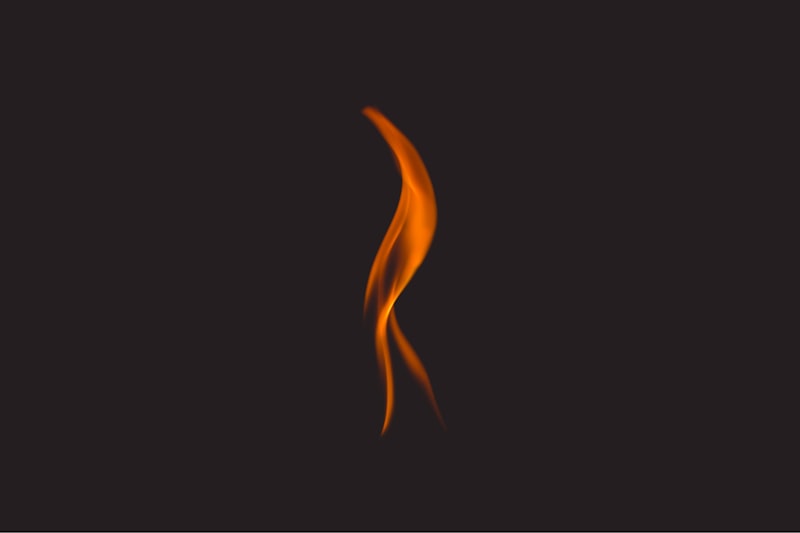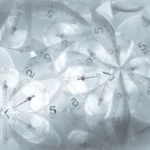- Dreams held a significant place in medieval society, where they were seen as messages from the divine and reflections of everyday life.
- Dream interpretation relied on understanding the symbolism and images that appeared in dreams and drew upon astrology, superstitions, and religious beliefs.
- Dream books and manuals were consulted as guides to interpreting dream symbolism, providing insights into future events, personal relationships, and emotional well-being.
- Astrology played a significant role in understanding dreams, with the positions and movements of celestial bodies believed to influence dream experiences and their meanings.
Dreams held a significant place in medieval society, where they were seen as messages from the divine and reflections of everyday life. People during this time believed that dreams carried important meaning and could offer insights into the future or guidance for daily life. The interpretation of dreams drew upon a range of beliefs, including the connection between the dream world and the divine realm, as well as the influence of astrology and superstitions.
Overview of Dreams in the Middle Ages

Importance of Dreams in Medieval Society:
- Dreams were not seen as mere fantasies or random images, but as messages from a higher power.
- They were believed to hold valuable insights into one’s fate, allowing individuals to navigate their lives with greater understanding.
- Dreamers sought to interpret their dreams to gain guidance, insight, and warnings about their future.
The Dream World as a Connection to the Divine:
- Dreams were seen as a means of communication between humans and the divine realm.
- They were believed to be a gateway to receiving divine revelations, guidance, and instructions.
- Dreams often featured biblical or religious symbolism, with figures like angels or saints appearing as messengers from God.
Medieval Dream Interpretation and Astrology:
- Dream interpretation relied on understanding the symbols and images that appeared in dreams.
- Dream books and manuals were consulted as guides to interpreting dream symbolism.
- Astrology played a significant role in understanding dreams. The positions and movements of celestial bodies were believed to influence dream experiences and their meanings.
The Influence of Superstitions and Omens on Dreams:
- Dreams were often associated with superstitions and omens in medieval society.
- Dreams such as those of death or funerals were believed to foreshadow actual events or bring warnings.
- Dreaming of weddings or marriage was seen as omens of love and happiness, while certain animals in dreams held specific meanings.
Common Medieval Dreams and Their Meanings:
- Flying dreams represented a sense of freedom and transcendence.
- Falling dreams symbolized insecurities, loss of control, or vulnerability.
- Naked dreams suggested vulnerability, exposure, or fear of judgment.
- Chased dreams were seen as warnings or indications of unresolved conflicts or potential dangers.
- Teeth falling out dreams represented loss, vulnerability, or fear of aging.
The Decline of Medieval Dream Interpretation:
- As the Middle Ages came to an end, the belief in dreams as divine revelations diminished.
- Scientific advancements and cultural shifts led to a greater emphasis on rationality and skepticism.
- Dream interpretation gradually evolved into a more psychological and subjective understanding in subsequent centuries.
Symbolism and Meanings of Various Dream Elements

Dreams have long captivated the human imagination, and in the medieval period, they were seen as powerful messages from the divine realm. The interpretation of dreams relied heavily on the symbolism within them, with different elements holding specific meanings and insights into the dreamer’s life. In this section, we will explore the symbolism and meanings associated with various dream elements, providing a window into the fascinating world of medieval dreams.
1. Animals in Dreams
Animals played a significant role in medieval dream interpretation, representing different qualities and characteristics that held symbolic meanings. Here are some common animal symbols and their interpretations:
- Lion
Symbolized strength, courage, and leadership. Dreaming of a lion often indicated the dreamer’s own qualities of courage and power. - Snake
Represented deceit, temptation, or danger. Dreaming of a snake could be a warning of potential risks or treachery. - Owl
Signified wisdom and knowledge. Dreaming of an owl was seen as an invitation to seek guidance and enlightenment. - Butterfly
Symbolized transformation and metamorphosis. Dreaming of a butterfly often indicated personal growth and positive change.
These are just a few examples of the diverse animal symbolism found in medieval dreams. Each animal held different meanings based on its characteristics and cultural associations.
2. Symbolism of Marriage and Children
Dreams involving marriage and children were seen as important omens in medieval times. They represented different aspects of the dreamer’s personal relationships and future prospects. Here are their interpretations:
- Marriage
Dreaming of a wedding symbolized harmony, love, and partnership. It was often seen as a positive sign for future relationships or celebrations. - Children
Dreams involving children were associated with fertility, creativity, and potential. Dreaming of having children or interacting with them indicated a desire for nurturing or a need to embrace one’s innate creativity.
These dreams provided insights into the dreamer’s emotional desires and aspirations in the realm of relationships and family.
3. Symbols Reflecting Health Conditions: Sickness
In medieval dream interpretation, dreams reflecting health conditions were considered significant, as they could offer insights into the dreamer’s physical well-being. One common symbol associated with health was sickness:
- Sickness
Dreaming of illness or ailments often indicated potential health issues or emotional imbalances. These dreams served as a warning to pay attention to one’s well-being and seek appropriate care.
These dreams urged the dreamer to take proactive steps in maintaining their physical and emotional health.
4. Symbolism of Human Actions: Shaving, Washing, Dressing, and Wearing Shoes
Actions performed by the dreamer within a dream also held symbolic meaning in medieval dream interpretation. Here are the interpretations of some common actions:
- Shaving
Dreaming of shaving represented transformation and renewal. It symbolized shedding old habits or aspects of oneself to embrace personal growth. - Washing
Washing in a dream often symbolized purification and cleansing. It was seen as a metaphorical cleansing of emotional or spiritual impurities. - Dressing
Dreams of dressing represented self-expression and identity. It reflected how the dreamer desired to present themselves to others. - Wearing Shoes
Dreaming of shoes conveyed a sense of grounding, stability, and mobility. It represented the dreamer’s ability to navigate life’s challenges with confidence.
These actions allowed individuals to gain insights into their self-perception, personal growth, and overall well-being.
5. Building a House as a Good Omen, House Flooding as a Bad Omen
Dreams involving houses held profound symbolic meanings in medieval dream interpretation. Here are interpretations associated with building a house and house flooding:
- Building a House
Dreams of building a house were seen as positive omens, representing stability, security, and accomplishments. They symbolized the dreamer’s efforts in creating a solid foundation and a fruitful future. - House Flooding
Dreaming of a flooded house signified emotional turmoil, overwhelming challenges, or a potential loss of stability. It was often seen as a warning to address unresolved emotional issues or potential upheavals in one’s life.
These dreams provided insights into the dreamer’s desire for security, emotional well-being, and overall stability.
6. Color Symbolism: White vs Black Horses
Color symbolism played a crucial role in medieval dream interpretation. Here are the interpretations associated with white and black horses:
- White Horse
Dreaming of a white horse represented purity, strength, and freedom. It indicated favorable opportunities, spiritual growth, and positive transformations. - Black Horse
A black horse in dreams symbolized negative aspects, such as destruction or death. It often represented challenges, hardships, or looming obstacles that required careful navigation.
These color symbols provided valuable insights into the dreamer’s emotional state and their journey towards personal growth.
Dreams in the medieval period were viewed through a lens of symbolism and metaphorical interpretation. Animals, marriage, health conditions, human actions, houses, and colors all held significant meanings that offered glimpses into the dreamer’s emotions, desires, and potential future events. Understanding these symbolic elements allowed dreamers to gain deeper insights into themselves and make more informed decisions in their waking lives. Embrace the symbolism within your dreams and embark on an exciting exploration of your inner world.
Patterns and Interpretations of Common Medieval Dream Scenarios

Dreams have always captivated the human imagination, and the Middle Ages were no exception. During this period, dreams were believed to hold deep symbolic meanings and were seen as valuable sources of insight into one’s life, character, and destiny. In this section, we will explore some common dream scenarios in medieval times and uncover the fascinating interpretations behind them.
1. Flying Dreams as an Indicator of Freedom and Transcendence
Flying dreams were a common experience in medieval times and were often associated with a sense of freedom and transcendence. Dreamers would soar through the skies, defying gravity, and experiencing a euphoric sensation. These dreams were believed to symbolize the dreamer’s desire for liberation, escape from societal constraints, or a longing for spiritual enlightenment.
In a flying dream, the dreamer would have a bird’s-eye view of the world, detached from earthly concerns. This symbolized their ability to overcome obstacles in their waking life and rise above challenging situations. Flying dreams often represented a sense of empowerment and the potential for personal growth and transformation.
2. Falling Dreams: A Sign of Insecurity or Fear of Failure
Falling dreams were another common scenario in medieval dreamscape. These dreams involved the sensation of rapidly descending from a great height, often accompanied by feelings of fear, panic, and powerlessness. Falling dreams were interpreted as a sign of insecurity, instability, or fear of failure.
The act of falling symbolized a perceived loss of control or vulnerability in one’s waking life. It was believed that these dreams reflected anxieties, fears, or unresolved conflicts that needed attention. Falling dreams served as a gentle reminder for the dreamer to address these issues and regain a sense of stability.
3. Naked Dreams Indicative of Vulnerability or Exposure
Dreams of being naked were seen as a symbol of vulnerability and exposure in medieval times. These dreams often evoked feelings of shame, embarrassment, or fear of being judged by others. The dreamer would feel exposed, as if their true self was being revealed to the world.
Interpreting naked dreams depended on the context and emotions experienced within the dream. Being naked in front of a large crowd was seen as a sign of humiliation, while being undressed in front of a loved one could represent a desire for emotional intimacy and acceptance. These dreams highlighted the dreamer’s need for authenticity and acceptance of their true self.
4. Being Chased in a Dream: Evasion, Escape, or Resolution
Being chased in a dream was a common experience in medieval times. These dreams involved the dreamer being pursued by an unknown person or creature, sparking feelings of fear and anxiety. The interpretation of these dreams varied depending on the specific details and emotions experienced within the dream.
Being chased symbolized the dreamer’s attempt to evade or escape from a threatening situation or unresolved conflict in their waking life. The pursuer represented a person or issue that needed to be confronted or resolved. By facing the pursuer in the dream, the dreamer may have been encouraged to confront their fears or address unresolved issues in their waking life.
5. Dreams About Losing Teeth: Fear of Loss or Vulnerability
Dreams about losing teeth were considered significant in medieval dream interpretation. These dreams often evoked feelings of distress and anxiety as the dreamer experienced the sensation of their teeth falling out. Losing teeth was associated with a sense of vulnerability and potential loss of physical attractiveness.
The symbolic interpretation of losing teeth in dreams varied depending on the specific details and context of the dream. It was believed to represent a fear of aging, loss of power or control, financial insecurity, or difficulty in communication. These dreams served as reminders for the dreamer to pay attention to their health, personal relationships, and overall sense of well-being.
Role and Influence of Astrology on Medieval Dream Interpretation

Astrology played a significant role in the interpretation of dreams during the Middle Ages. It was believed that the movements and positions of celestial bodies had a direct influence on dreams, shaping their meaning and providing insight into an individual’s future and destiny. Let’s explore how astrology influenced dream interpretation and the techniques used to decipher the celestial messages within dreams.
1. Consultation of Astrological Charts for Dream Interpretations
One key aspect of medieval dream interpretation was the consultation of astrological charts. These charts provided a map of the positions of planets, stars, and other celestial bodies at the time of dreaming. Astrologers believed that these planetary alignments influenced a person’s dreams and could offer valuable insights into their meaning.
Dreamers would examine their birth charts and compare them to the positions of celestial bodies during their dream to understand the astrological influences on their dreams. For example, if someone dreamt of water while the Moon was in a specific phase, it may symbolize emotional instability or transformation.
2. Impact of Celestial Movements on Dreams
The movements and positions of celestial bodies during dreaming were believed to carry symbolic meaning in medieval dream interpretation. Here are some examples:
- Astrological Signs
Each astrological sign was associated with specific qualities and traits that influenced dreams. For instance, if someone dreamt of a lion, it could represent power, courage, or leadership. - Planetary Influences
Different planets were believed to govern various aspects of life, and their positions in the sky influenced dream symbolism. A bright and prominent Venus might symbolize love and romance, while a dominant Mars could indicate ambition or conflict. - House System
The twelve houses in astrology represented different areas of life. Planetary placements within specific houses during dreaming offered insights into corresponding aspects of a person’s life. For example, a planet in the house representing relationships might indicate romantic or social influences on dreams.
Dreams, therefore, were not seen as isolated events but rather as influenced by celestial energies and astrological dynamics. Understanding these cosmic influences allowed dreamers to interpret their dreams through an astrological lens.
3. Techniques for Interpreting Dreams with Astrological Influences
Interpreting dreams influenced by astrology required a comprehensive understanding of the symbols and meanings associated with celestial bodies. Here are some techniques employed during the Middle Ages:
- Analyzing Planetary Positions
Astrologers would examine the positions of different celestial bodies during dreaming and compare them to a dreamer’s astrological chart. This analysis unveiled insights into how specific planetary influences impacted the dreams and their meanings. - Mapping Symbols to Planetary Influences
Dream symbols were attributed to specific planets based on their associations with certain qualities or energies. For example, dreams involving love or beauty might be linked to Venus, while dreams involving ambition or conflict might be associated with Mars. - Considering Astrological Transits
Astrologers also took into account the transiting influences of celestial bodies on a dreamer’s birth chart. These dynamic influences offered additional perspectives on dream symbolism and provided clues about the timing or significance of certain events.
Combining these techniques allowed astrologers to unravel the intricacies of dream symbolism and provide meaningful interpretations rooted in astrological understanding.
Guided Dream Interpretation: Use of Dream Books and Manuals in Medieval Times

Dreams have long captivated the imaginations of people throughout history, and the Middle Ages were no exception. A period characterized by religious fervor and a strong belief in the supernatural, dreams were seen as powerful messages from the divine realm. To unlock the hidden meanings of these dreams, medieval dreamers turned to the use of dream books and manuals. These resources provided a guide to understanding the symbolic language of dreams and offered a framework for interpretation.
1. Importance and Role of Dream Books
Dream books and manuals played a crucial role in helping individuals decipher the hidden messages within their dreams. These texts contained lists of common dream symbols and their corresponding interpretations. The dreamer would consult these books to find the meaning of their dreams based on the symbols they encountered.
The significance of dream books in medieval times cannot be overstated. They were seen as valuable tools for personal growth, guidance, and decision-making. Dreamers believed that by understanding their dreams, they could gain insight into their own lives and make informed choices about the future.
2. Different Cultures and Religious Interpretations
Dream interpretation was heavily influenced by cultural beliefs and religious teachings. Different cultures, such as Christian, Islamic, and Jewish, had their own unique interpretations of dreams. These interpretations were often shaped by cultural norms, religious texts, and the beliefs prevalent in a particular society.
In Christian dream interpretation, for example, dreams were viewed through a religious lens. Dreams were seen as a means for divine communication and assistance. The interpretation of symbols in Christian dream books was often based on biblical stories and teachings.
Islamic dream interpretation placed a strong emphasis on prophetic dreams and believed that dreams could foretell future events. Islamic scholars developed extensive dream manuals that provided interpretations based on Islamic teachings and traditions.
Jewish dream interpretation drew upon ancient wisdom contained in Jewish texts such as the Talmud and the Zohar. Jewish dream books offered interpretations of dreams based on Jewish law and mystical teachings.
3. Psychological Analysis of Dreams in the Middle Ages
In addition to cultural and religious interpretations, dreams were also viewed through a psychological lens in the Middle Ages. Scholars and philosophers attempted to analyze dreams and understand their significance from a psychological perspective.
For example, Aristotle believed that dreams were caused by bodily processes and subconscious thoughts. He saw them as a way for the mind to process and organize information.
Medieval physician and philosopher Avicenna saw dreams as indicators of physical and mental health. He believed that dreams could reveal imbalances within the body and emotions.
Medieval psychologists also explored the concept of archetypes in dreams. These universal symbols were seen as representations of shared human experiences and desires. Dreamers would turn to dream books to understand the significance of these archetypal symbols.
4. Conclusion
Dream books and manuals were valuable resources in helping individuals find meaning and guidance in their dreams during the Middle Ages. These texts provided interpretations based on cultural, religious, and psychological perspectives. Dreamers would consult these resources to gain insight into their own lives, make important decisions, and seek guidance from the divine realm.
In medieval times, dreams were a source of fascination and a way to understand the world around us. Today, dream interpretation continues to serve as a window into our subconscious, revealing hidden thoughts, fears, and desires. While we may not rely on astrology or superstitions as heavily as in the past, dream symbolism remains a powerful tool for self-discovery and personal growth. Whether you’re a student of history or simply curious about your own dream life, exploring the world of medieval dream meaning can be a rich and rewarding experience. So why not take some time to delve into this fascinating topic and see what insights you can uncover from your own dreams?










Leave a Reply